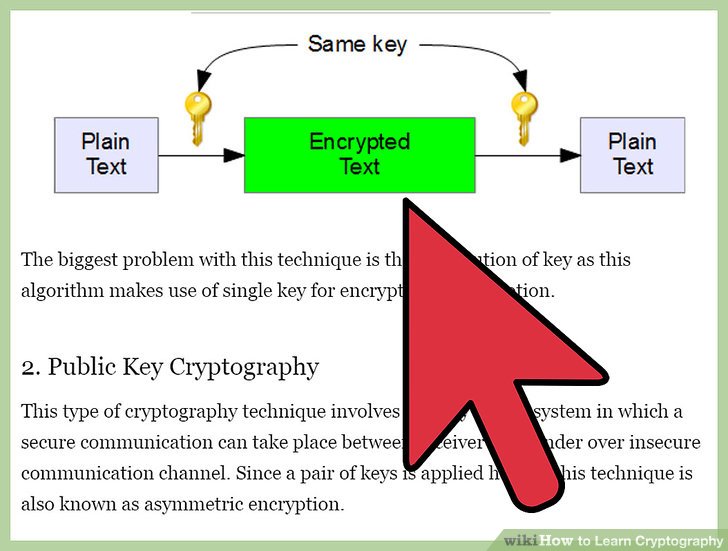The allure of cryptography lies not just in its seemingly arcane techniques, but also in its fundamental role in securing our digital lives. While the subject may conjure images of intricate algorithms and complex mathematics, the truth is that anyone with a modicum of dedication and curiosity can begin their journey into the world of cryptography without the need for a Ph.D. The fascination with cryptography stems from its dual nature—it is both an art and a science, a blend of historical intrigue and cutting-edge technology. By understanding the essential requirements for learning cryptography, aspiring enthusiasts can embark on a rewarding intellectual pursuit that promises to captivate their interests.
To begin, a foundational knowledge of mathematics is beneficial. Cryptography is deeply rooted in mathematical theories, particularly in areas such as number theory, algebra, and combinatorics. However, this does not necessitate an advanced degree; a high school understanding of concepts such as prime numbers and modular arithmetic is often sufficient. For instance, the RSA algorithm, a widely used method for secure data transmission, hinges on the properties of large prime numbers and the difficulty of factorizing them. Grasping these fundamental concepts allows learners to appreciate the mechanisms behind encryption and decryption, thus providing a solid groundwork for further exploration.
Moreover, one must cultivate a familiarity with computer science principles. In a digital era, the practical application of cryptographic methods often involves programming languages and computational algorithms. Proficiency in languages like Python, Java, or C++ not only enables the implementation of cryptographic algorithms but also fosters deeper understanding. Many resources are available online to learn programming, making it accessible to self-starters. As learners experiment with code, they can witness firsthand how cryptographic principles manifest in real-world applications, reinforcing theoretical knowledge through practical exercises.
Understanding the historical context of cryptography can significantly enrich the learning experience. Cryptography has a long and rich history, dating back millennia to the use of simple ciphers in ancient civilizations. By studying historical examples—such as the Caesars cipher, the Enigma machine, or the modern challenges posed by quantum computing—students can marvel at the evolution of cryptographic techniques. Such knowledge not only inspires but also situates current practices within a broader narrative of human ingenuity and resilience against adversarial forces.
In addition to mathematics and computer science, learners should familiarize themselves with fundamental cryptographic concepts. Understanding key concepts such as symmetric and asymmetric encryption, hashing, and digital signatures provides a framework for navigating the complexity of the field. Each concept serves a distinct purpose; symmetric encryption, for example, requires a shared secret key for both encryption and decryption, while asymmetric encryption employs a pair of keys, public and private, to enhance security. Recognizing these distinctions allows novice cryptographers to appreciate the subtleties of data protection and information security.
Furthermore, engagement with practical resources—such as cryptographic libraries, tools, and online courses—can significantly enhance the learning process. Many platforms offer free or low-cost tutorials that guide learners through hands-on projects involving cryptography. These resources often break down complex ideas into manageable tasks, making the learning curve less daunting. For those who thrive on challenges, participating in capture-the-flag competitions or coding challenges that incorporate cryptographic riddles can provide an exhilarating way to apply newfound skills in a competitive environment.
Equally important is the cultivation of a curious mindset. Cryptography is not merely a technical field; it embodies a quest for security and trust in a digital society fraught with vulnerabilities. Fostering an inquisitive approach towards problems, a desire to understand how cryptographic protocols work, and a willingness to question assumptions leads to deeper insights and innovative thinking. Curious minds will naturally gravitate toward advanced topics, such as zero-knowledge proofs or homomorphic encryption, which push the boundaries of traditional cryptography into novel territories.
Moreover, community engagement and collaboration can greatly enhance the learning process. By participating in forums, attending workshops, or becoming involved with online groups dedicated to cryptography, learners can exchange ideas, seek guidance, and stay informed about emerging trends and vulnerabilities. Networking with experienced cryptographers can provide invaluable mentorship opportunities, guiding newcomers through the complexities of the field while fostering a sense of belonging in a collective passion for security.
In conclusion, the journey to learn cryptography can be undertaken by anyone, regardless of their academic background. While it may seem intimidating at first glance, the requirements for diving into this domain are far less prohibitive than often perceived. A basic understanding of mathematics, coupled with knowledge of computer science, historical context, and a curious mindset, can open the doors to a fascinating world where science and art converge. As our reliance on secure communications only grows in our increasingly digital society, taking the plunge into cryptography not only nurtures personal knowledge but contributes to a broader mission of safeguarding information in a world hungry for security.








Leave a Comment